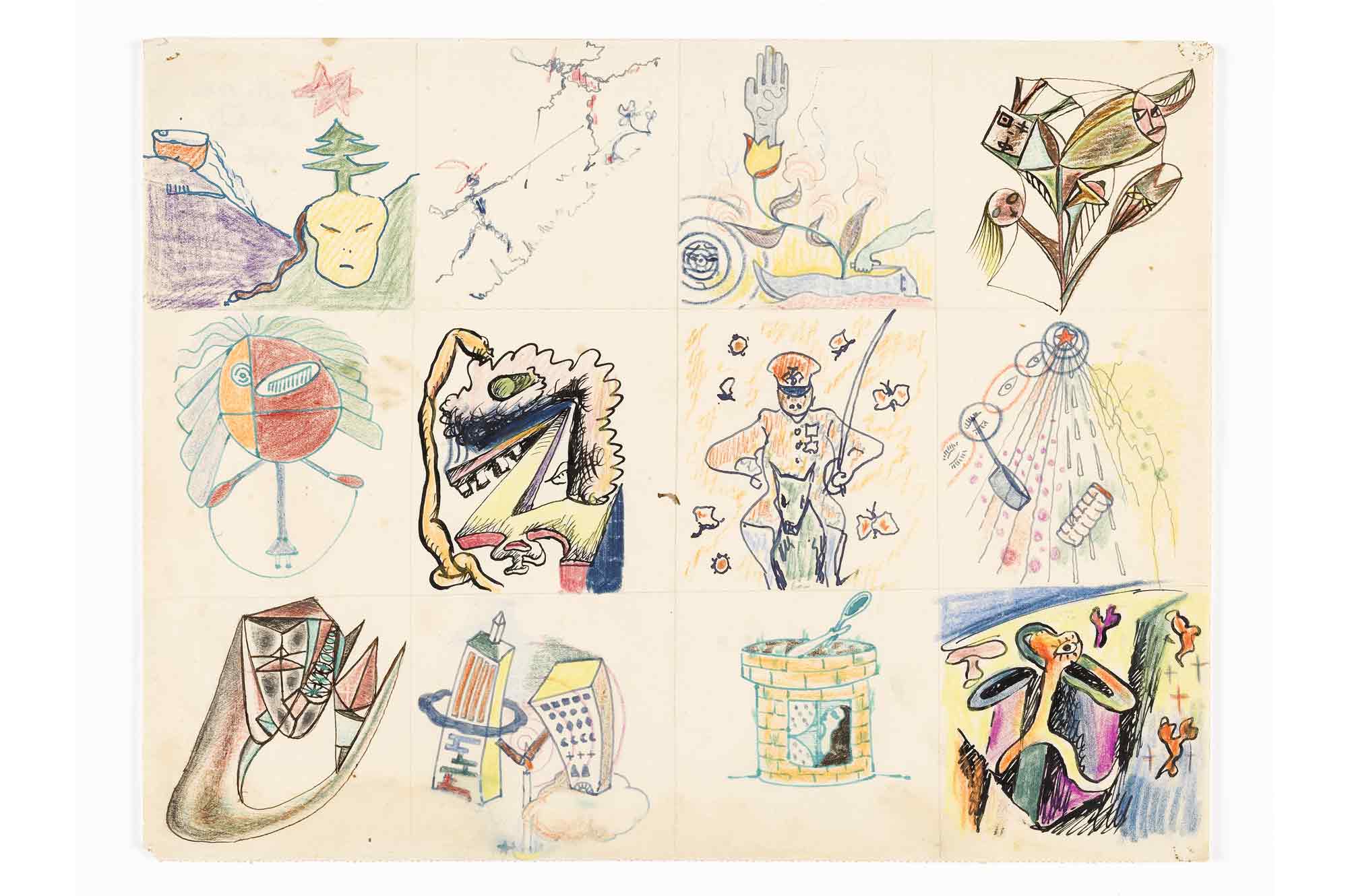Wilfredo Lam (1902-1982, CU) entered the Alejandro Academy in Havana before leaving for Madrid in 1923, where he divided his time between the studio of Fernando Álvarez de Sotomayor and the Prado Museum. After enlisting with the Republicans during the 1936 Civil War, he left Spain two years later for France, where he was welcomed by Picasso on the recommendation of the Catalan sculptor Manolo Hugué. The occupation of the capital by the German army drove him to Marseille in June 1940, where he joined the group of artists brought together by Breton at the Villa Air-Bel. It was there that he drew the figures of Alice and Lautréamont for the Jeu de Marseille. Leaving the city aboard Captain Paul Lemerle, he arrived in Fort-de-France in Martinique in April 1941, where he met the poet Aimé Césaire, who had just published a few fragments of Cahier d’un retour au pays natal (Notebook of a Return to my Native Land). In July 1941, Lam returned to Cuba after an eighteen-year absence. The paintings he produced in 1942 and 1943 testify to the richness and complexity of his mental universe, whose roots were cultivated by Caribbean, African and European cultures.
Surrealist collective drawings
After May 1940, Marseille was home to refugees coming from across Europe to escape to the Americas. Many artists, musicians, writers and thinkers found refuge at Villa Air-Bel, run by the US-American journalist Varian Fry with the support of the Emergency Rescue Committee (today called The International Rescue Committee). There, they would bide their time until they were able to escape. Victor Serge even named the spacious residence ‘Château Espère-Visa’. At one point or another, the Villa’s guests included such notables as André Breton, Jacqueline Lamba, Oscar Dominguez, Victor Brauner, Jacques Hérold, Wifredo Lam, Max Ernst, André Masson and Marcel Duchamp. André Gomès was keeping their photographic diary. In its large library, the motley group would engage in playful collective activities: readings, games, riddles and anagrams of all kinds, but perhaps most notably ‘exquisite corpses’, which Breton defined as ‘a folded paper game that consists of having several people compose a sentence or a drawing, without any of them being able to take into account previous collaboration or collaborations.’ In the classic example that gave the game its name, the first sentence read ‘the exquisite corpse-drink-wine-new’. Though it started with text, the game soon encompassed drawings, collages and photographic fragments.









 Victor BRAUNER, André BRETON, Oscar DOMINGUEZ (Oscar DOMINGUEZ-PALAZON, dit), Wifredo LAM (Wifredo Oscar LAM Y CASTILLA, dit), Anonyme (sans précision), Jacques HÉROLD (Herold BLUMER, dit), Jacqueline LAMBA
Dessin collecif 1940 - 1941 Marseille,
Collection Musée Canitini, Marseille
Victor BRAUNER, André BRETON, Oscar DOMINGUEZ (Oscar DOMINGUEZ-PALAZON, dit), Wifredo LAM (Wifredo Oscar LAM Y CASTILLA, dit), Anonyme (sans précision), Jacques HÉROLD (Herold BLUMER, dit), Jacqueline LAMBA
Dessin collecif 1940 - 1941 Marseille,
Collection Musée Canitini, Marseille